Overland Commute – Part 2 Morocco
“You have Kalashnikov in there?” asked a weary Moroccan customs official in broken English. Two hours after rolling onto Moroccan tarmac we had filled in countless forms, seen them passed around various policeman, douanes (customs officials) and gendarmes then watched as the kayakers and everyone else were one-by-one sent on their way. Eventually our turn came and with the reassurance that we weren’t hoarding AK-47s we were free to go. We were in Africa.
The easiest way to Chefchaouen, Morocco’s blue city, would have been via Ceuta and then the main road to Tétouan. However, after over 1600 miles on tarmac the lure of the dirt proved too strong. Less than hundred metres after exiting the port we pulled off the blacktop and started climbing away from the coast. We gained height quickly on loose gravel and admired the fantastic views. If it was this good already, Morocco was going to be a cracker.
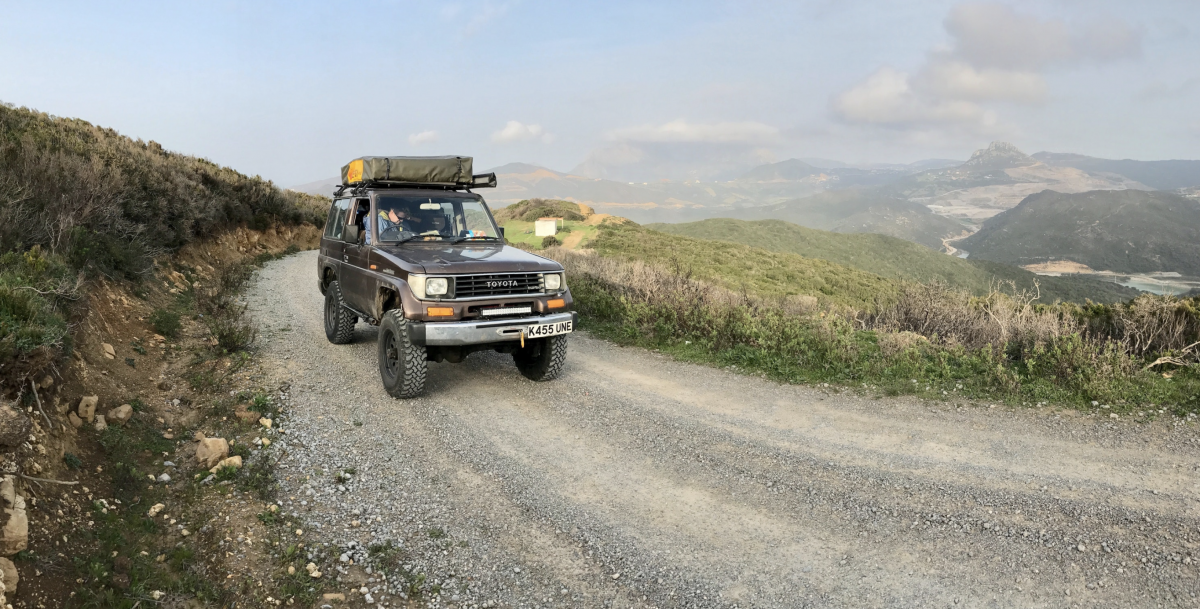
With the immigration delays we were eventually forced onto tarmac to make up some miles. Even so, it was dark by the time we reached Camping Azilan, high on the valley side above Chefchaouen with rows of big, clean, white French RVs. Sat shivering round our burner the warm glow of an RV living room looked very appealing, maybe we’d brought the wrong vehicle. In the morning we met Simon, a short, stocky military-type fellow Brit, who was touring Morocco in his VW T4. He’d been travelling by himself for sixteen years and driven over 360,000 miles, crossing the Himalaya and more. As we sat having breakfast I watched as old French men emerged from their RVs and shuffled towards the toilet block, each carrying or dragging a barrel-shaped plastic tank. We may be at the mercy of the elements, I mused, but at least we don’t have to carry our excrement to the toilet each morning.
There was only one reason I wanted to visit Chefchaouen. Having grown up admiring Steve McCurry, one of photography’s true titans, the chance of photographing a blue city and trying to emulate his iconic images from Jodhpur, India’s blue city, was too much to pass up. We descended steep rock steps through the town cemetery before exploring the intricate web of streets, passageways and markets looking for the perfect shot. The narrow, cobbled alleys, each a different shade, provided the perfect canvas but finding a focus for each image proved difficult. It reinforced what I’ve come to understand about photography; a great image requires two independent but complimentary elements working together. Without the second, a layered pastel sunset or a crumbling blue alleyway offers nothing more for the eye to peruse. If you can squeeze in a third, well, then you’re Steve McCurry.
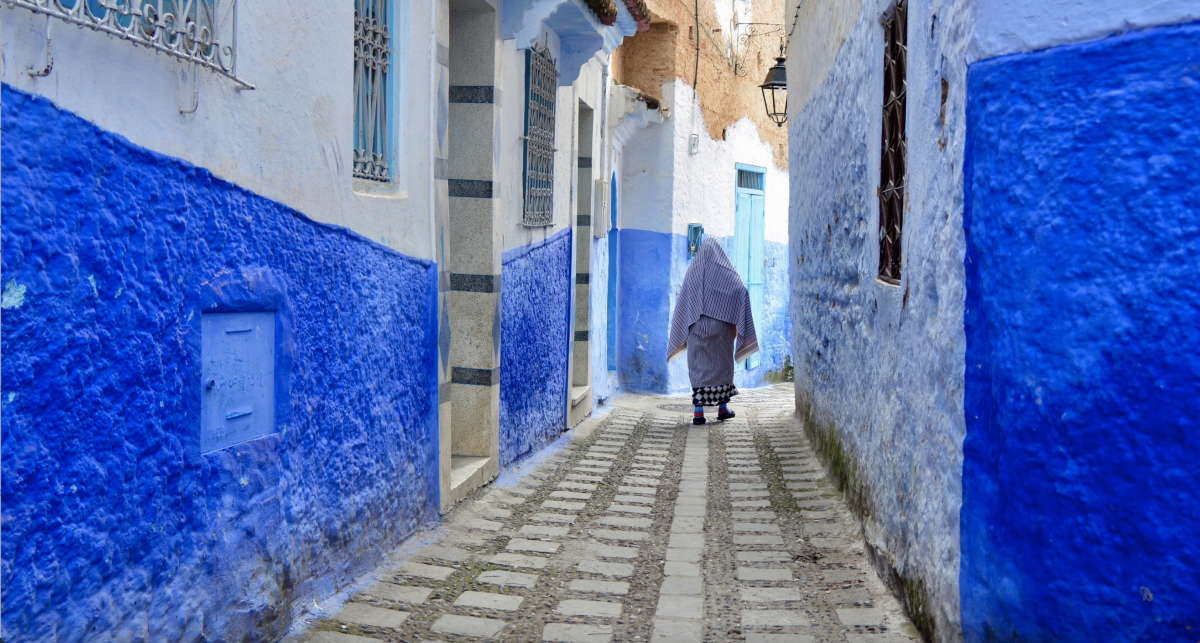
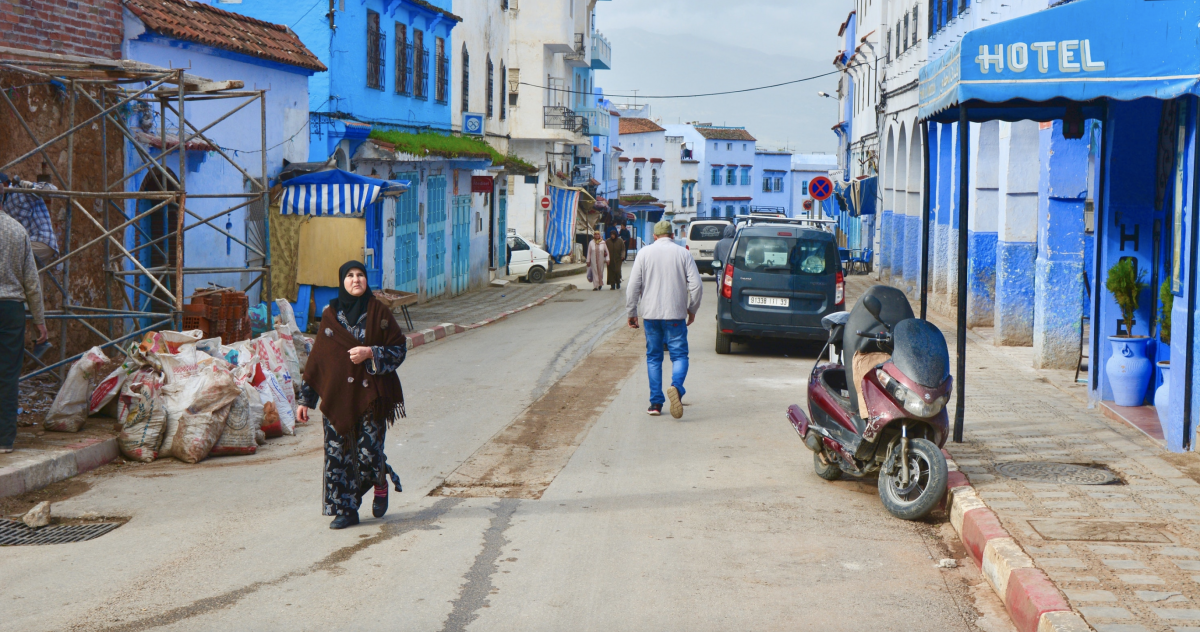
Our route from Chefchaouen meandered through Morocco’s cannabis growing region, bands of stoners lying by the roadside, bundled up in their djellabas and waving bags of hash. As we approached Fes we looked for the best route into the city, rather than heading east and entering via the main road we found a small track on maps.me, the offline mapping app we used throughout the trip, that took us straight into the northern edge of the city. The narrow, rocky track climbed through lush fields and almond trees ripe with blossom before winding down towards Fes.
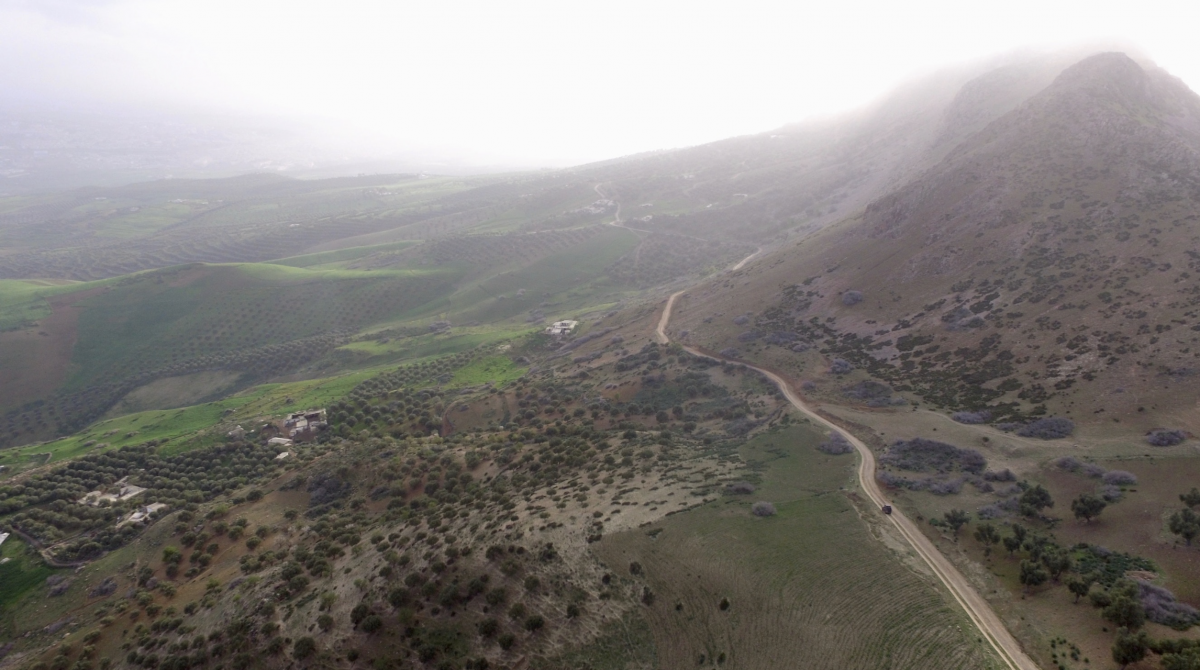
We rejoined the tarmac and then promptly stopped, thousands of perfectly ordered bundles of wool were spread out alongside the road, it was as though all of Morocco’s sheep came here to be sheared each year. As I knelt taking photos a car pulled up alongside us. I heard snippets of the conversation, my dad reassuring them that we hadn’t broken down and then explaining that we were on our way to Mali. I wandered over and met Dick and Gigi, a British couple living in Morocco. They had seen our British plates and were curious as to what we were doing. Minutes later we had accepted an invite to tea and proceeded to chase them into the centre of Fes, through the towering city walls before turning off a busy thoroughfare and into a quiet courtyard ringed by stables.
As the sun set over the quadrangle below we enjoyed tea and cake on the terrace, chatting about what had brought them to Morocco. Gigi ran American Fondouk, a charitable hospital that offered free veterinary care to Morocco’s overworked and underfed horses and mules. We were treated to an impromptu ward round, Gigi explaining a little about each ‘patient’ while Dick, a doctor working with International SOS, provided the vet to doctor translation. There were P3 (distal phalanx) fractures, a foal with a septic joint and, saving the best (most interesting) for last, a horse with a football-sized swelling hanging from it’s belly. The level of sophistication was remarkable, an international team of vets had access to x-ray, gastroscopy, ultrasound, a small lab and each week specialists in the US joined them for an interactive transatlantic ward round.
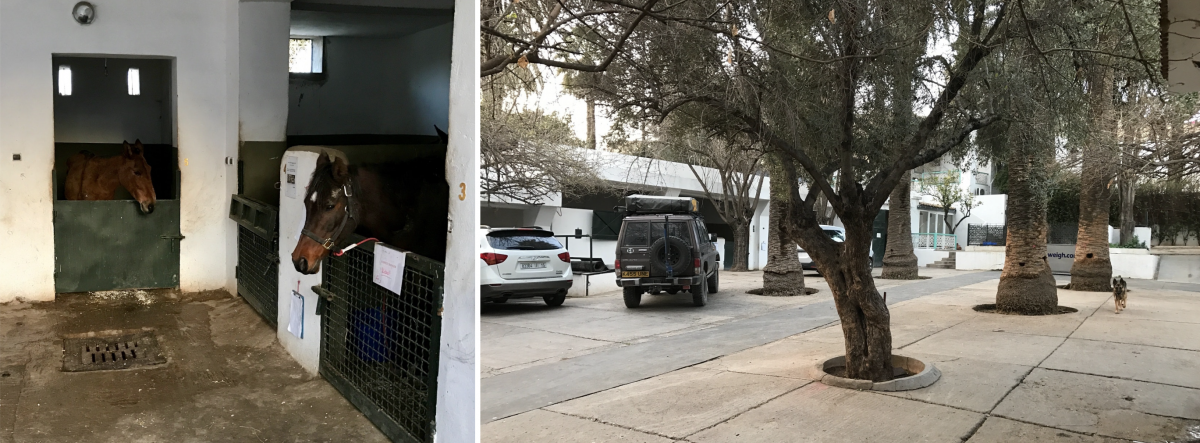
We didn’t take much convincing to accept their generous offer of dinner and a night in the guest bedroom. We sat round a crackling open fire and traded stories late into the evening. Dick’s encyclopaedic knowledge of Morocco from a stint managing the country’s Peace Corps volunteers helped us plan our route for the next couple of days. We were planning to tackle the Cirque de Jaffar, a piste south of Midelt that dangerousroads.org described as ‘one of the most dangerous roads in the world’ and were concerned that snow might make it a touch more dangerous. Dick thought that this early in the year it probably wouldn’t be passable but the gendarmes posted on the lower slopes would have the final say.
We set off the following morning well-fed and marvelling at the fantastic people one unexpectedly meets on a trip like this. After a few hours we could finally see white peaks in the distance, flat semi-desert gave way to a wall of snow-topped rock that sat across the horizon. Thinking we ought to tackle the Cirque with bellies full we stopped for lunch at one of the roadside tagine and kebab restaurants, carcasses hanging out front waiting to be hacked up and cooked.
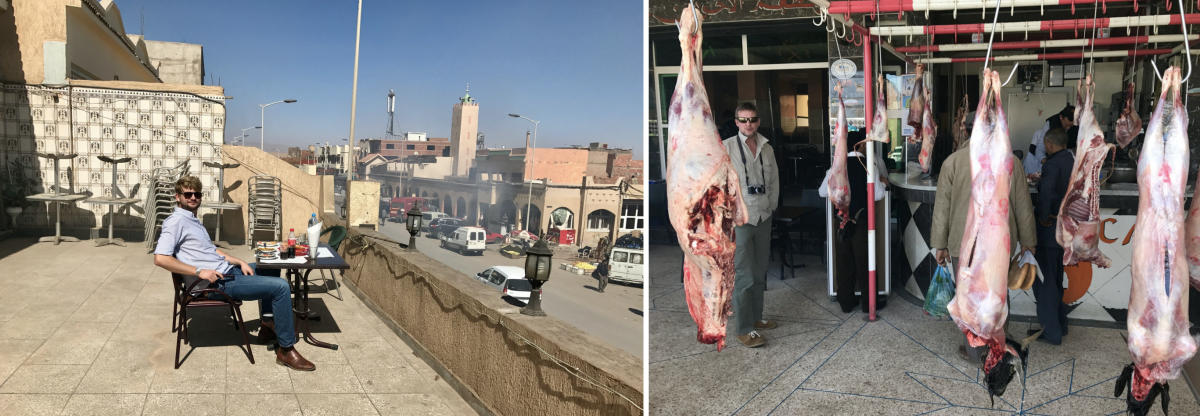
Zaida, Province Midelt, Daraa-Tafilalet درعة تافيلالت,
We soon found the turnoff for the Cirque, as the road climbed slowly we wondered when we’d encounter the gendarmes. To the left snowcapped peaks butted up against the road while to the right scattered scrub dropped away towards the distant plain from which we’d come.
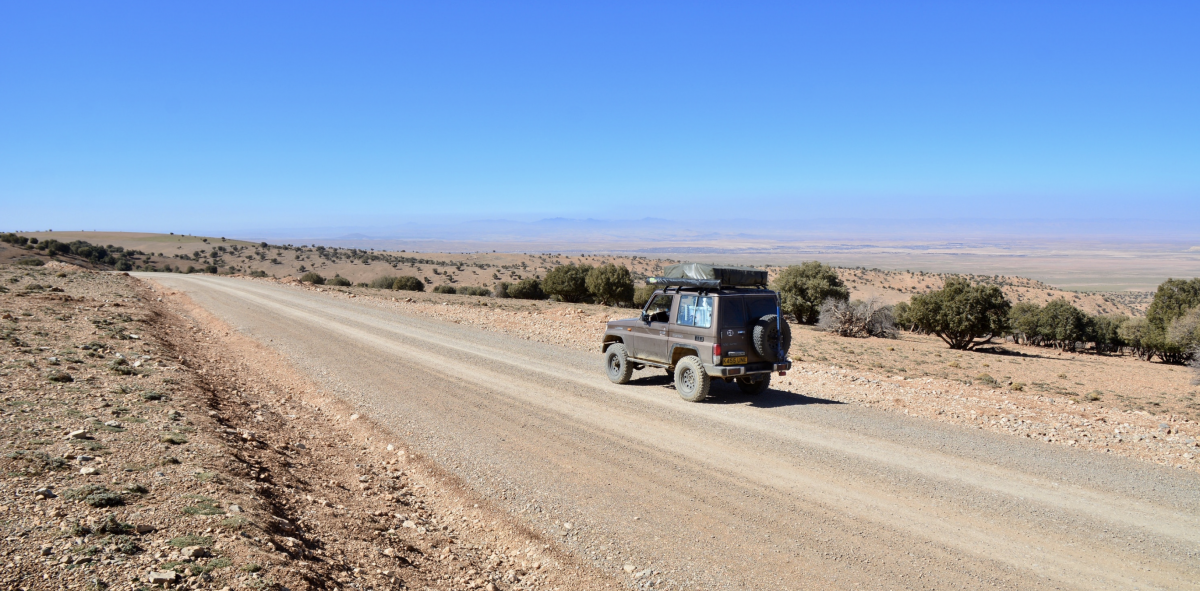
The road was eerily quiet and with no gendarmes in sight we agreed to keep moving and reconsider if it got too dangerous. Turning towards the mountains we began contouring along valley walls, the surface deteriorating and the exposure growing with every kilometre. We aired down and pushed on in low range passing patches of snow and proof of the destructive power of the snow come spring-time, deep channels scoured into the rock by meltwater.

As the valley walls grew steeper, more and more of the track was in the shade and the snow became deeper and more widespread. Eventually our luck ran out, around a tight rocky corner we were confronted by a twenty metre snowdrift covering the track. We couldn’t squeeze past without risking a slide into the valley and the angle meant we would have risked rolling if we tried to drive across it. There was only one option, get the shovel out and dig. Two hours later, sweaty, muddy and cursing our decision to bring only a single small spade, we planned the next step. With the right side of the track loose and wet and at risk of shifting under the weight of the vehicle we utilised the sand ladders and winch to increase traction and arrest a potential slide.

By the time we made it through the snowdrift it was dark. We pushed on, the map suggested we’d join a slightly bigger road in about 10 km and we wanted to reach this before we made camp. The light bar proved invaluable, bathing the track in enough light to make safe progress. Thoroughly exhausted we eventually pulled over, cooked dinner and toasted the day with mugs of tea. It was an immensely satisfying feeling to be relieved of my constant yearning for adventure, reading about other’s endeavours had taken a back seat to living my own and I felt very lucky to be sat under a star spattered sky pondering what the next day would bring.
The following morning, after breakfast and a drone flying session, we made good progress on decent roads towards Imilchil. The map suggested our route would follow a river to Agoudim, relief, we hoped, from the Moroccan tendency to put roads straight over mountains rather than contour around them. However, as we were to find out, if you build a road too close to the river it gets washed away in flood season. Every hundred metres or so we were forced into the river to bypass patches of road that had disappeared completely, constantly wondering whether we were going to eventually come across an obstacle we couldn’t manage.
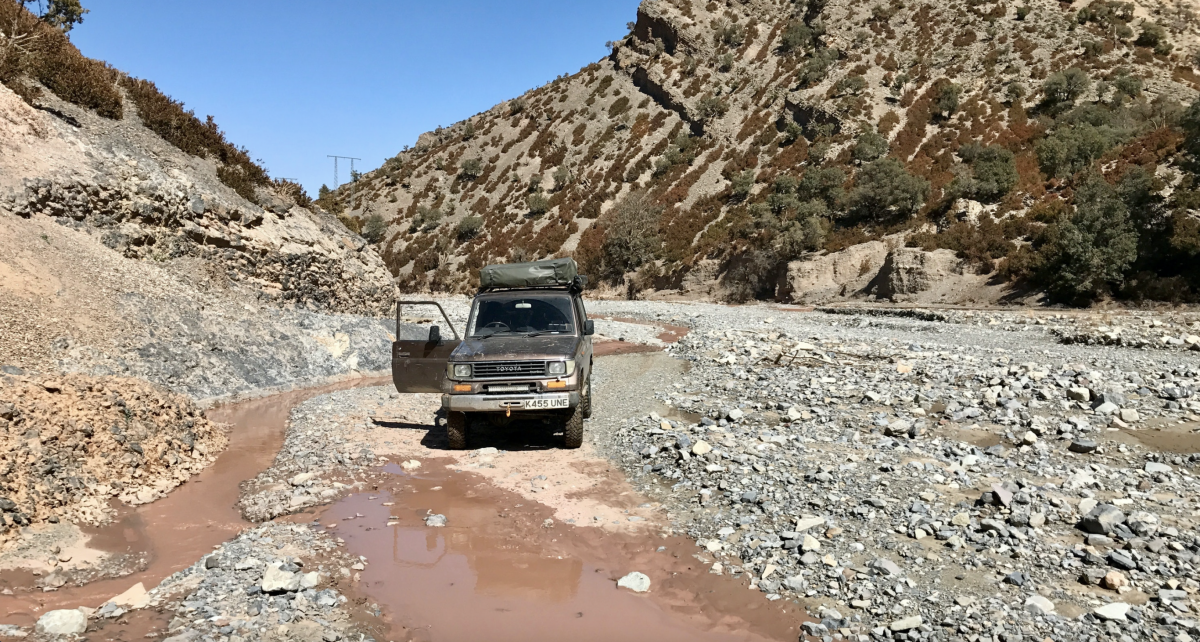
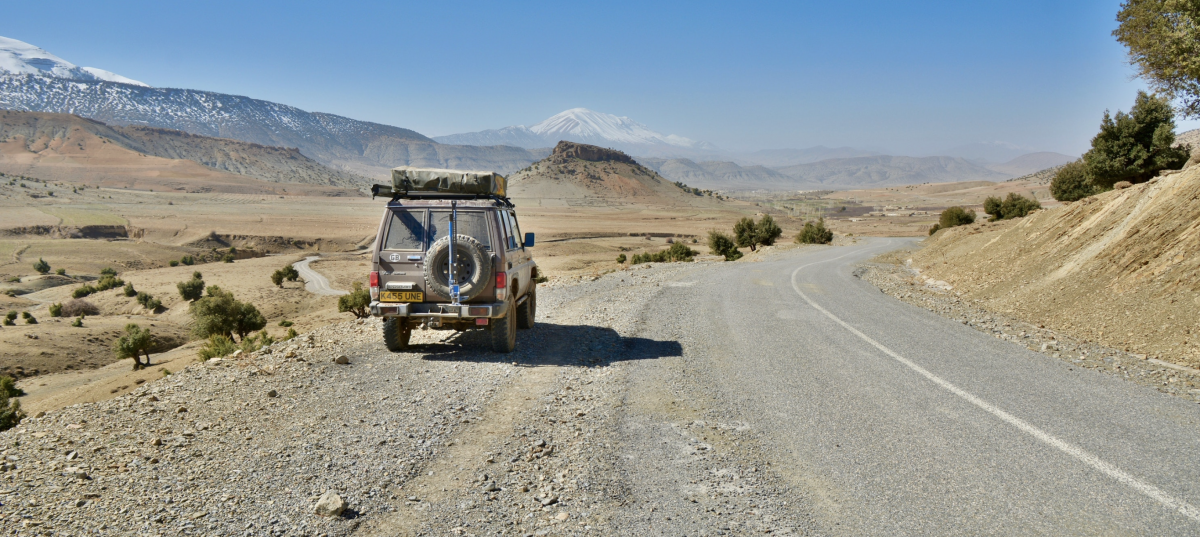
After a few kilometres and many hours the road finally dragged itself upwards away from the river’s grasp and we were able to make better progress. We passed drab, beige, crumbling mountain villages set in the foothills of statuesque mountain vistas. I recalled a Paul Theroux quote that perfectly summed up the dichotomous feelings these places can generate. The ancient, unaffected way of life inspiring a fleeting jealousy at the simplicity of it all, a feeling that soon dissolves, the true extent of the poverty uncomfortable and overwhelming.
“It was a vision of the past, undeveloped, serene at a distance, and up close harsh and unforgiving.” — Paul Theroux
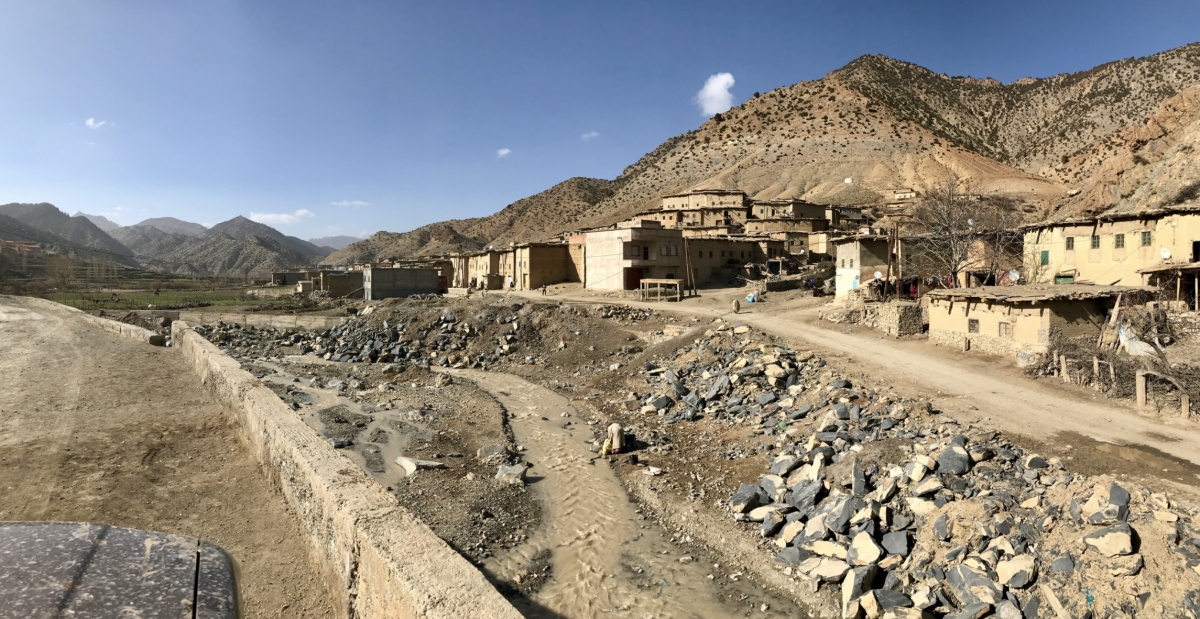
From the valley floor we climbed up above the snow line, the high point of the trip before descending to Auberge Ibrahim, recommended by Dick, in Agoudal for a tagine of chicken and chips and a few beers.
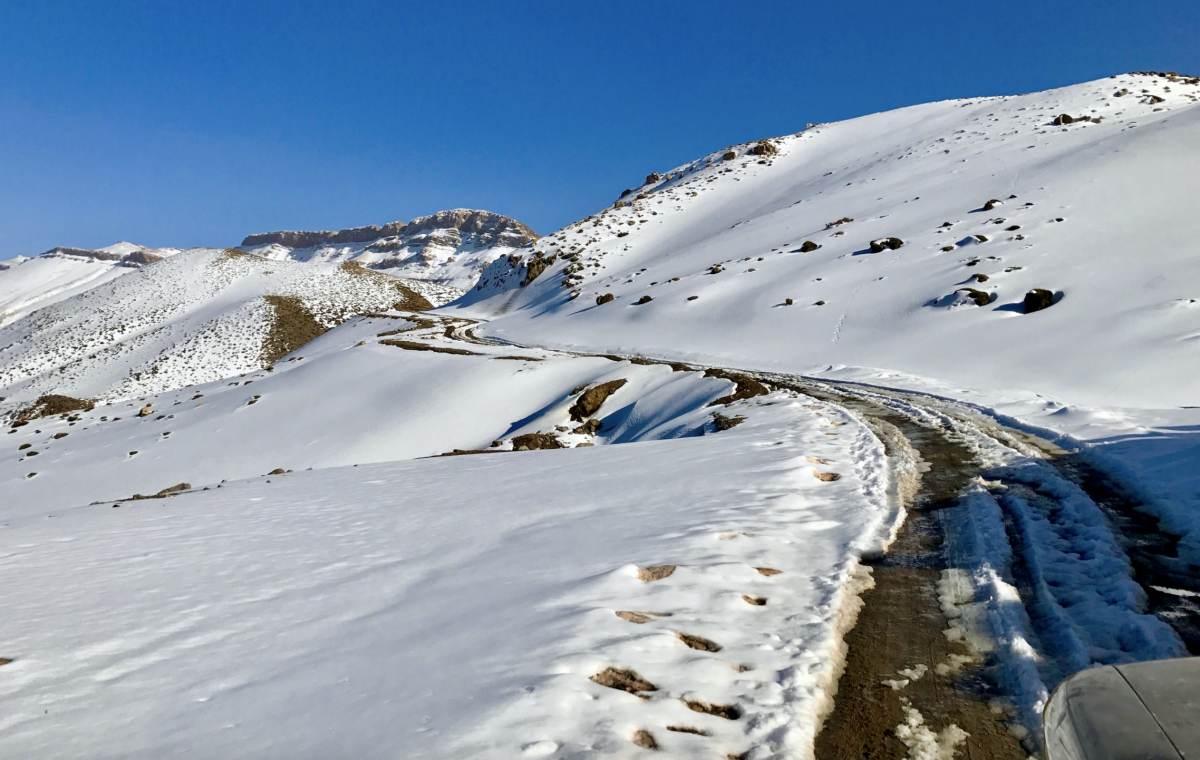
Slightly behind schedule and not wanting to battle anymore terrible roads or snow, we opted for the Todra Gorge as opposed to the higher and more exposed Gorge du Dades. We slipped through the gorge’s towering walls and started our run to the coast, mountains giving way to palm filled oases and the beginnings of the next phase of the trip, empty, barren desert.

At the end of day eleven after a three hundred mile slog along the southern corridor we pulled into Fort Bou Jerif. Just inland from the Atlantic it had been recommended by Simon and was, according to our guidebook, a great place for information on Mauritania and Senegal as it was normally full of overlanders. Maybe it was the exorbitant prices or the difficulty of access, the road having recently been washed away leaving a significant detour, but the place was empty. Admittedly, the tagine was good and the beers cold but it certainly wasn’t worth the money. Rough camping, we concluded over the beers, is nearly always better.
The following morning we pored over the maps and settled on a plan; we’d head towards the coast and drive along the beach before rejoining a conveniently placed track that would take us inland towards Tan-Tan. We crawled down a steep, rocky access track to the sand in low-first and headed south. Five kilometres or so down the beach, turning away from the sea we found the track leading away from the coast was nearly half a metre deep in water. Soggy underfoot and with no potential winch anchors the risk of getting stuck was too high. We decided to retrace our steps back down the beach. However, having been distracted by the route finding difficulties we hadn’t realised the tide had crept in beyond the sand and was now crashing onto the shingle. We turned tail and floored it, the truck sliding around on loose pebbles as we desperately hoped the sea hadn’t cut off our exit route. Luckily we sneaked through in time and climbed back up off the beach. I thought of the famous Top Gear Hilux experiment, we’d come too close to trying out a Land Cruiser version, a careless misjudgment on our part.

By lunchtime the subsequent day we had crossed into Western Sahara and were looking for somewhere to eat. Having failed at the first two places we asked a friendly looking policeman. “Back the other way,” he pointed, “left after the third policeman.” Sure enough, three policeman and a left turn later we had a choice of three restaurants. Western Sahara, a disputed territory that’s been dubbed Africa’s last colony, has been occupied by Morocco since 1975 with UN led negotiations at a stalemate. Home to the world’s biggest wind farm, the second biggest phosphate deposit on earth and a lot of policeman it just felt like one long ribbon of tarmac buffeted by rolling Atlantic winds. To distract us from the monotony we pulled off the ribbon as it ran close to the sea, picking a route to the edge to enjoy the spectacular views; turquoise swell battering passive, crumbling cliffs.
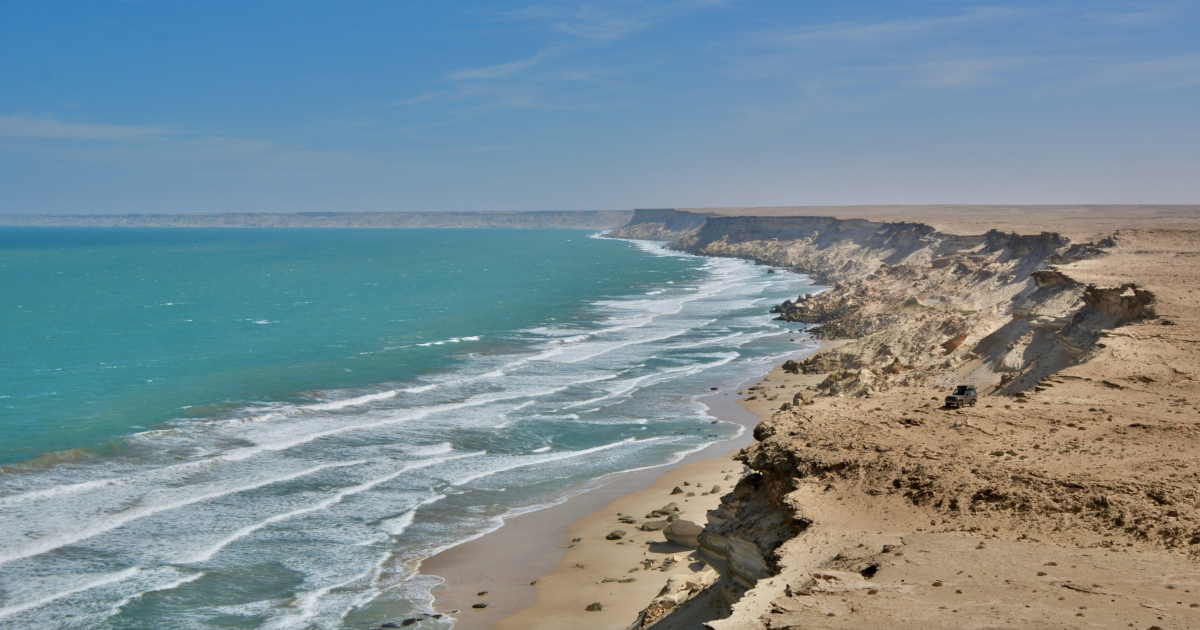
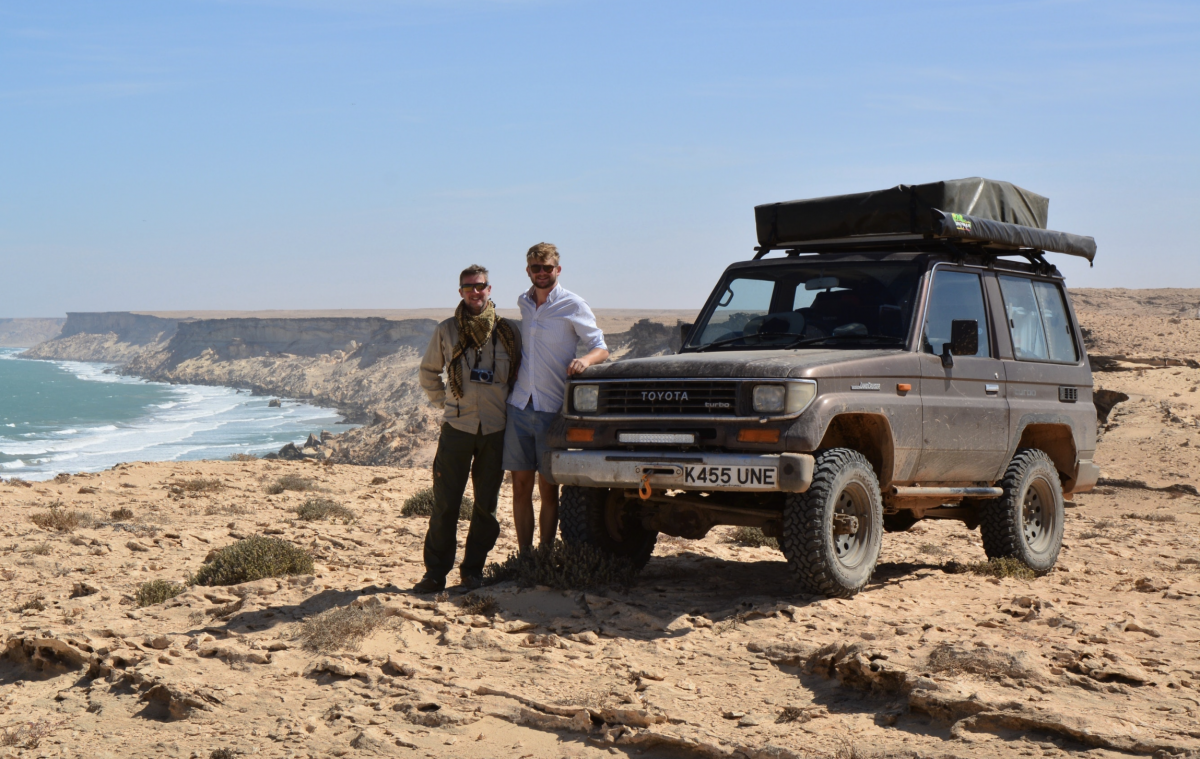
More of a lay-by than a town, the windswept line of shacks making up El Argoub was pretty much the only place for lunch on our last day in Morocco. As we tried extracting meat from the charred tray of lamb in front of us a dirty white coach pulled over, the driver pausing at a snack shack before striding over. Well over six foot, with a beer belly, three-quarter length tracksuit trousers, and more than a passing resemblance to Billy Connolly, he introduced himself as Christian. Born in Germany he now lived in Greece, buying a used bus each month and driving it to Bamako, each sold for a small profit. Having driven the route multiple times over the last couple of years he mentioned how surprised he was to see Brits heading down through Francophone west Africa. He wished us well and wandered back to his bus, little did we know how many times we’d cross paths before Bamako.
With the wind getting stronger and wanting to get an early start to make the border in the morning we booked into Hotel Barbas for the night. A large Dutch group were also staying there on their way to Gambia. They were driving an eclectic mix of vehicles, Volvos with roll cages, a Pajero with a hole cut in the bonnet thanks to a cooling issue and a Discovery that had had it’s engine replaced earlier in the week. That’s why you bring a Land Cruiser, I thought — ‘We’ll know how long it lasts when the first one wears out’ — ran a Toyota advert in 1971.
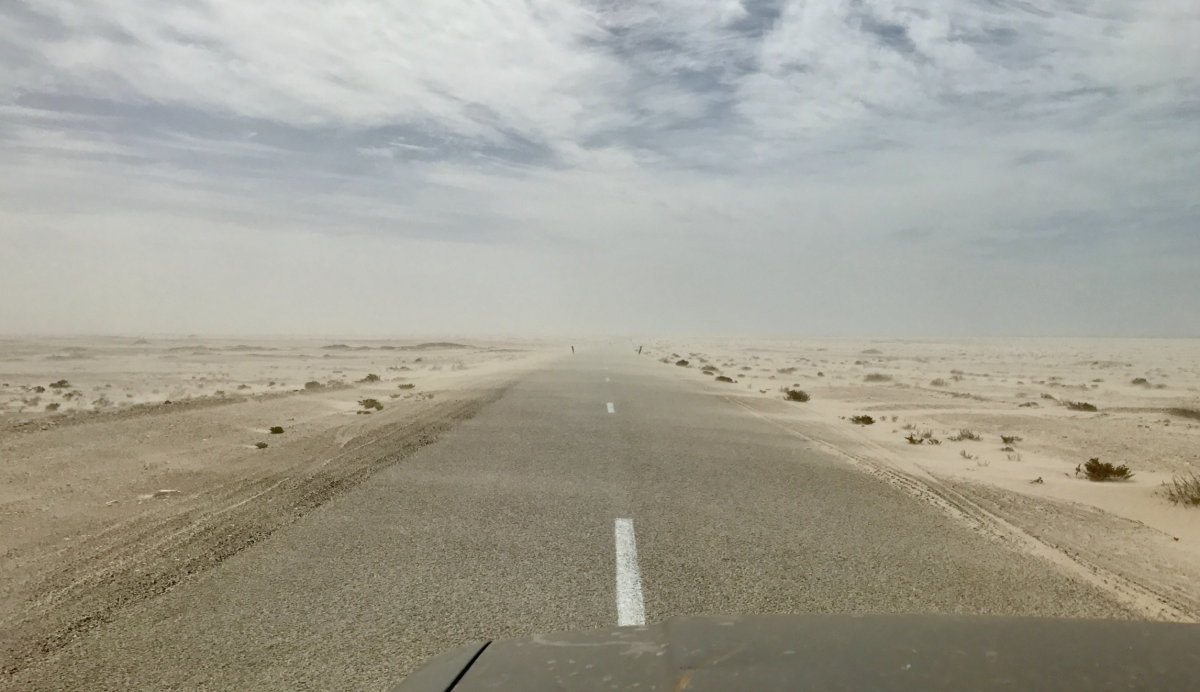
Also staying at the hotel, Christian joined us for dinner and told us about his years in Africa, stints working between weeks on the road. His background as a mechanic allowed him to find second hand bargains in Greece, crawling underneath chassis that have already seen over a million miles to find one that would do another million, or two. After tagine Christian invited us for beers on the bus, we sat amongst the boxes of Ikea furniture he was taking to a friend in Nouakchott and sipped warm San Miguels. We filled him in on our route, picking up some useful tips and his take on various countries and their people; Mauritania, “a pure stone age place” and the Germans “they value their work more than their women”. Crossing into Mauritania the next day would give us the perfect opportunity to assess just how ancient it was, assessing the German affliction I’d have to save for another trip.